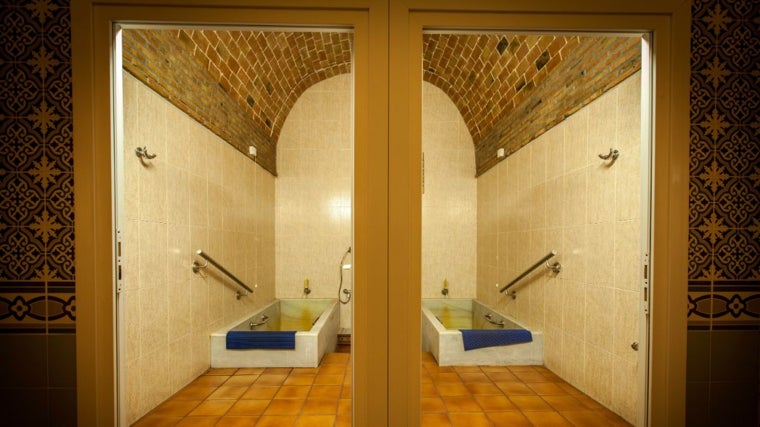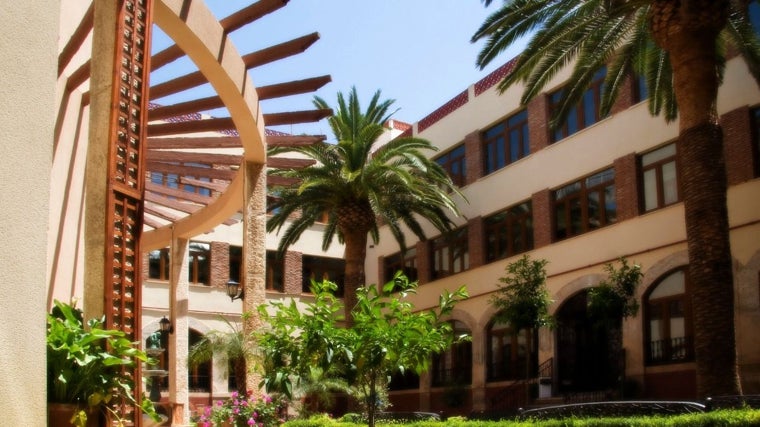It's not in Malaga: this is the other 'Ronda' hidden in Andalusia, which has centuries-old spas.

Located in the heart of the Alpujarra region of Almería, nestled in the foothills of the Sierra de Gádor, lies a hidden gem that, while not as famous as Ronda, offers a unique combination of history, nature, and wellness . Known as the "Gateway to the Alpujarra," this town stands out above all for its centuries-old spa, its architecture of Moorish origin, and its mountainous surroundings, which invite adventure.
This picturesque town, whose name comes from the Arabic word al-hamma, meaning "hot springs," is Alhama de Almería. It's located just 20 minutes from the capital of Almería, an hour and 45 minutes from Granada, two and a half hours from Málaga, and four hours from Seville, making it a perfect option for a weekend getaway.
The healing properties of the waters of Alhama de Almería have been known since ancient times. Archaeological remains reveal the presence of Roman baths and Arab baths, demonstrating the importance of these waters in various civilizations.
The San Nicolás Spa, located in the heart of the village, is Alhama's main attraction. Its thermal waters, with a constant temperature of 47.5°C, are rich in minerals such as calcium, magnesium, sodium, and potassium, and are used to treat rheumatic, respiratory, digestive, and nervous disorders. This spa, dating back to Roman times, has witnessed the evolution of thermal tourism in the region.
Today, the San Nicolás Spa continues to offer therapeutic treatments based on the mineral-medicinal properties of its waters. Visitors can enjoy thermal circuits, massages, and other therapies in a pleasant setting.
 Image of the spa
San Nicolás spa
Image of the spa
San Nicolás spa
The resort offers a wide variety of rooms , ensuring that each guest can find the option that best suits their needs. There are 20 junior suites, 12 rooms with terraces , 41 double rooms, and 12 single rooms, all equipped with the necessary amenities for a comfortable stay. The junior suites can also be converted into triple rooms to accommodate groups of friends or families with children.
But the thermal waters, with their medicinal properties , are the resort's "crown jewel," ideal for treating a wide variety of ailments. The resort also offers a wide range of spa services, so guests can enjoy a relaxing and rejuvenating experience. You can enjoy massages, a Turkish bath, a whirlpool bath, a sauna, a Scottish shower, and pressure jets, among others.
The spa also has a buffet-style restaurant, ideal for enjoying quality cuisine made with the freshest and most typical products from the Alpujarra region of Almería .
 Image of an outdoor area of the spa
San Nicolás spa
Image of an outdoor area of the spa
San Nicolás spa
But while Alhama de Almería is best known for its hot springs, you can also enjoy its stunning natural surroundings. Located in the Alpujarra region of Almería, the town offers mountainous landscapes , trails that wind through olive and almond groves, and panoramic views that invite contemplation and relaxation.
Just walk through the streets and look at the buildings of Alhama de Almería to appreciate its historical legacy. From prehistoric remains to Roman and Arab vestiges , the town is a melting pot of cultures. The fortress known as Los Castillejos, built on a Bronze Age settlement, stands as a testament to its strategic importance in times past.
In fact, the municipality contains several archaeological sites from the Copper Age , some of which are protected as Sites of Cultural Interest (SCI). For example, there is the megalithic necropolis of Loma de Galera, a site consisting of 38 tombs dating back to the 3rd millennium BC; the megalithic necropolis of Alhama, located on a plateau with 55 tombs and three alignments; and the so-called Fortín 12 de los Millares, a site consisting of structural remains and ceramic material from the Copper Age.
There is also La Puente , a neoclassical-style viaduct whose construction is linked to the economic boom the area experienced at the beginning of the 19th century thanks to mining and the cultivation of the Ohanes grape. It has been registered as a site of cultural interest , with the category of Monument, since November 28, 2023, for its architectural, historical, ethnological, scenic, scientific, and technical value.
Although Holy Week declined significantly in the 1960s, its popularity has recovered. Particularly noteworthy is the turnout for the very sober Stations of the Cross in the early hours of Good Friday . What stands out most is the Easter Sunday procession of the Child Jesus, which, given the devotion of the people of Alhama, must be announced during the Easter Vigil to calm the spirits.
This moving tradition , which delighted the anticlerical Salmerón himself, consists of carrying an image of the Child God (dressed with a bunch of grapes that symbolizes the municipality) and another of his Holy Mother in procession to the sound of pasodobles, amidst races and joyful dances and encounters of the images while the people of Alhama ensure that a huge shower of confetti does not stop.
The typical cry of "Long live the Pythian Child Jesus!" , which is usually said during the procession, was banned because it was considered obscene, but was revived at the insistence of the people in 1977.
Despite the natural, historical, and cultural richness of Alhama de Almería, this municipality remains a little-known destination for many. Precisely for this reason, its tranquility, far from the hustle and bustle of other tourist destinations, makes it an ideal place for those seeking relaxation, well-being, and a genuine connection with history and nature.
ABC.es





